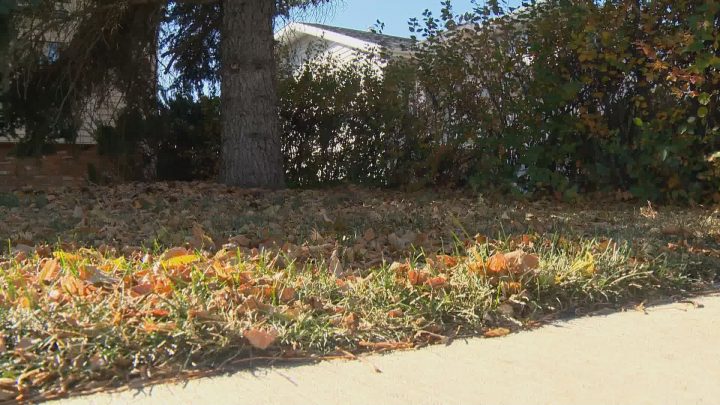It might be time to put your rake away. The Nature Conservancy of Canada (NCC) suggests keeping leaves on your lawn this fall for a variety of reasons.

Leaves release chemicals like carbon when broken down. Keeping them on the lawn to decompose into the ground acts as a natural fertilizer and prevents the chemicals from being released into the atmosphere.
Piles of leaves can also protect critters that don’t migrate and need cover in the winter months.
“You can spread them in things like flower beds and create those kind of small areas of that habitat for your pollinators and other little animals,” said Nature Conservancy of Canada Southwest Saskatchewan program director Michael Burak.
However, it might not be the best idea to have too many leaves on your lawn.

Get daily National news
Advanced Lawn Care owner Jeff Thiessen said matted leaves in the snow can cause mold to grow. He suggests mulching the leaves to get the most out of them.
“They’re going to break down more and add more organic matter to your soil so it’s almost like a natural fertilizer, but it has to be able to break down fast enough – that’s why we need to mulch them,” Thiessen explained.
Thiessen also said it’s a good idea to aerate lawns in the fall so it gets the air and nutrients needed to grow thicker in the spring.
When the snow begins to melt in the spring, Burak said you can begin regular lawn maintenance again. He suggests keeping the leaves on your lawn until they dry up.
NCC also said it’s beneficial leaving fallen fruit on your lawn, as they can be a good snack for migratory birds before they fly south.



Comments